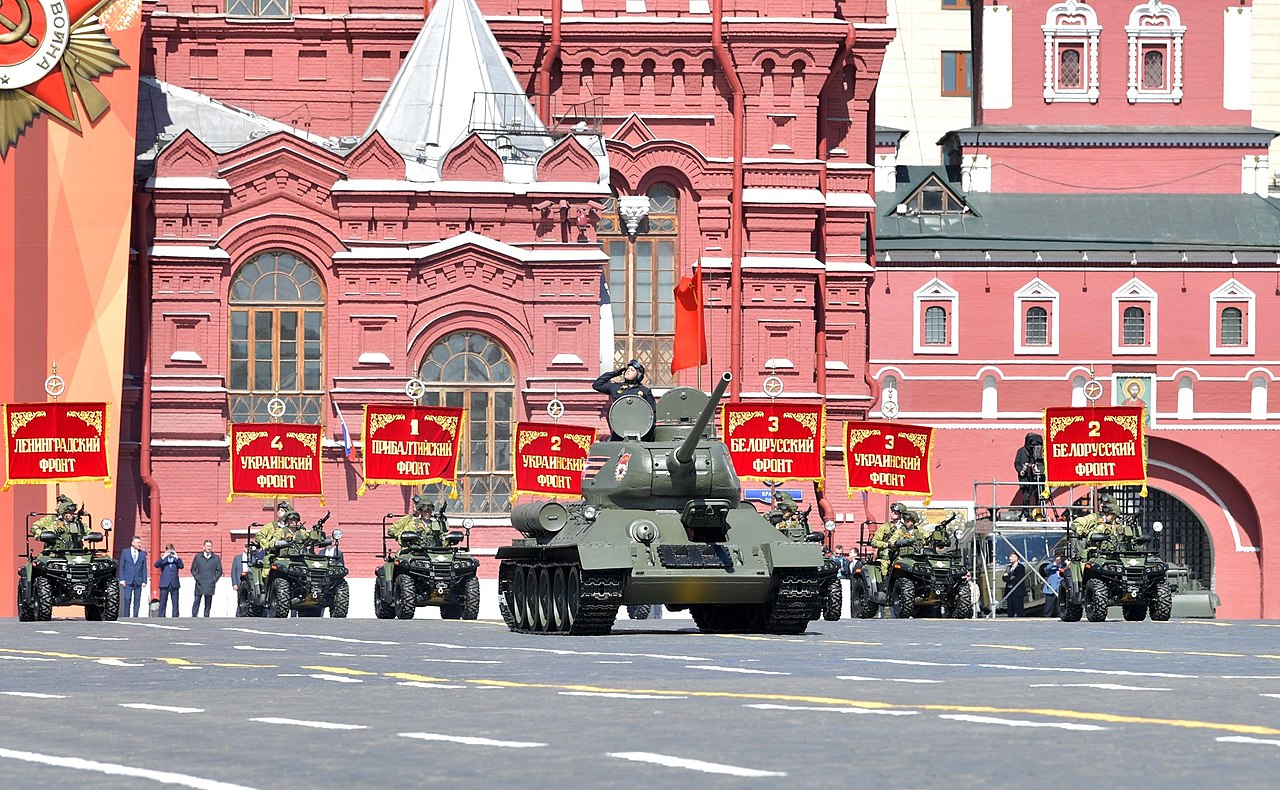Hitler, in his manifesto, Mein Kampf had announced, “The end of the Jewish domination in Russia will also be the end of Russia as a state.”
Victories in Poland and France made Hitler and several of his military high command overconfident with a strong belief that Germany would most certainly prevail over Russia.
However, in late 1941, the German General Staff became acquainted with the might of the deadly Russian T-34 tanks that simply outclassed the Panzer III & Panzer IV tanks which were the mainstay of the Nazi German army.
The initial years of the Nazis’ conquests of Western Europe saw Panzer IIIs team up with the Panzer IVs, wherein the Panzer III armed with a 37 mm KwK L/46.5 gun and firing armor-piercing rounds acted as the tank killer, while the Panzer IV would provide support using its 75mm howitzer, firing high explosives to destroy soft-skinned targets such as enemy anti-tank guns.
Speed And Proficiency
Despite neither of these two tanks having the best armor protection or anti-armor weapons, their speed, combined with the proficiency of the Panzer crews, managed to lead the victorious advances through France, Holland, the Balkans, and North Africa.
All this changed after Nazi forces invaded the Soviet Union, and the Soviet army fielded its T-34 tanks, which possessed several design features that were well ahead of its time and could blow German Panzers all the way back to hell.
The new armored vehicle had an excellent 76 mm high-velocity gun known to be capable of killing any tank in the world at the time and cruised at more than 35 miles per hour.
The Germans’ standard anti-tank guns could not penetrate the thick, sloped armor of the T-34 with a shot to its front, and Panzer IVs with their short-barrelled cannon could penetrate the new Soviet tank but only if they could successfully pull off a flanking or a rear shot.
World War II German Field Marshall Ewald Von Kleist described the T-34 as “the finest tank in the world.”
This sullen realization of the T-34’s near invincibility posed an urgent demand for a new design to counter the T-34, and the Panzer V program became a top priority.
Daimler-Benz (now Mercedes-Benz) and Maschinenfabrik Augsburg-Nürnberg AG (MAN) each proposed a design in April 1942, and eventually, MAN’s design was selected because it would make use of existing turret designs which meant that it could be put into production much quicker.
In September 1942, the production of the Panther medium tanks began, but numbers were extremely limited due to delays caused by a lack of specialized machine tools. By December, the production was expanded to factories of Daimler-Benz, Maschinenfabrik Niedersachsen-Hannover, and Henschel & Sohn.
By 1943, the factories were producing, on average, 148 Panzer V Panther tanks per month.
Added Weight
The tank was originally meant to weigh 30 tons, but Hitler demanded extra armor and a heavier gun, so it ended up weighing almost 50 tons. The armor thickness of the vehicle ranged from 1.2 to 4.3 inches.
The main armament of the Panther was the long-barrelled 75mm gun, while secondary weapons included three 7.92mm MG34 machine guns – one coaxial, one anti-aircraft, and one hull front. The tank could carry 79 rounds of ammunition for the main gun.

It had a crew of 5, including a driver, radio operator/hull machine gun, gunner, loader, and commander. Three of the crewmen were positioned in the massive turret.
Powered by a Maybach HL 230 12-cylinder diesel which provided 700 horsepower, the tank could do a top road speed of 29mph and a range of 110 miles.
The Panthers first saw combat at the Battle of Kursk – the great showdown between Nazi Germany and the Soviet Union – that involved the largest tank battle in the history of mankind.
Initially, they posed a variety of problems, with suspension systems breaking down and engines overheating and catching on fire. At that battle, more Panther tanks became casualties due to mechanical problems than those damaged in combat.
While acknowledging the strength of the frontal armor and the weapons, German armor commander Heinz Guderian later noted that early model Panther tanks “burnt too easily, the fuel and oil systems were insufficiently protected, and the crews were lost due to lack of training.”
Most of these mechanical problems were rectified by late 1943, and by June 1944, Panther comprised half of the German front-line tank strength.
The 76 mm guns of Russian T-34 tanks were ineffective against Panther tanks’ thick frontal armor, whereas the Panther tanks’ guns could penetrate the armor of T-34s from all angles.
The Panthers were also noted for having a far more complicated suspension system than the Russian T-34. They had torsion bars and 18 overlapping road wheels on either side. Wide tracks enabled even distribution of the Panther’s weight when traveling over soft ground.
There was also an improved Panther Ausf G variant equipped with additional armor protection and an improved power train with better exhaust handling, however, production of all models of the Panther was slow, and there were simply never enough of them to make a serious difference on the battlefield.
Only about 6,000 Panthers were built during the war as compared to 60,000 T-34 tanks produced by the Soviet Union, proving the point made by Joseph Stalin when he remarked, “Quantity has a quality all its own.”
The Soviet Union, with its huge industrial might, ultimately defeated Nazi Germany in the battle of production.
After World War 2 ended, France acquired 50 Panther medium tanks and deployed them to the 503e Régiment de Chars de Combat, where they remained in use until the early 1950s. Sweden operated one Panther medium tank for testing until 1961.
- Written by Tanmay Kadam/EurAsian Times Desk
- Contact the author at etdesk@eurasiantimes.com
- Follow EurAsian Times on Google News




